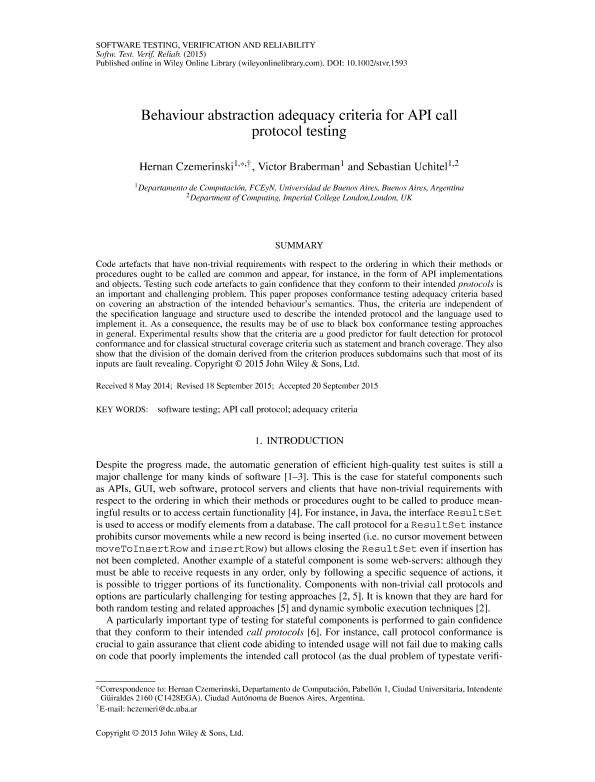Artículo
Behaviour abstraction adequacy criteria for API call protocol testing
Fecha de publicación:
05/2016
Editorial:
John Wiley & Sons Ltd
Revista:
Software Testing, Verification & Reliability
ISSN:
0960-0833
Idioma:
Inglés
Tipo de recurso:
Artículo publicado
Clasificación temática:
Resumen
Code artefacts that have non-trivial requirements with respect to the ordering in which their methods or procedures ought to be called are common and appear, for instance, in the form of API implementations and objects. Testing such code artefacts to gain confidence that they conform to their intended protocols is an important and challenging problem. This paper proposes conformance testing adequacy criteria based on covering an abstraction of the intended behaviour's semantics. Thus, the criteria are independent of the specification language and structure used to describe the intended protocol and the language used to implement it. As a consequence, the results may be of use to black box conformance testing approaches in general. Experimental results show that the criteria are a good predictor for fault detection for protocol conformance and for classical structural coverage criteria such as statement and branch coverage. They also show that the division of the domain derived from the criterion produces subdomains such that most of its inputs are fault revealing.
Palabras clave:
Adequacy Criteria
,
Api Call Protocol
,
Software Testing
Archivos asociados
Licencia
Identificadores
Colecciones
Articulos(ICC)
Articulos de INSTITUTO DE INVESTIGACION EN CIENCIAS DE LA COMPUTACION
Articulos de INSTITUTO DE INVESTIGACION EN CIENCIAS DE LA COMPUTACION
Articulos(OCA CIUDAD UNIVERSITARIA)
Articulos de OFICINA DE COORDINACION ADMINISTRATIVA CIUDAD UNIVERSITARIA
Articulos de OFICINA DE COORDINACION ADMINISTRATIVA CIUDAD UNIVERSITARIA
Citación
Czemerinski, Hernán; Braberman, Victor Adrian; Uchitel, Sebastian; Behaviour abstraction adequacy criteria for API call protocol testing; John Wiley & Sons Ltd; Software Testing, Verification & Reliability; 26; 3; 5-2016; 211-244
Compartir
Altmétricas




